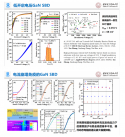If DUV gives Huawei so much trouble, how can Huawei proceed with a much more delicate EUV?at that time, Huawei had a strong light source for DUV and EUV.. they need good engineers... and they are testing that light source... this is from 2020
You are using an out of date browser. It may not display this or other websites correctly.
You should upgrade or use an alternative browser.
You should upgrade or use an alternative browser.
Chinese semiconductor industry
- Thread starter Hendrik_2000
- Start date
- Status
- Not open for further replies.
What logic is this? That was 2 years ago. Huawei has worked with SMEE since then instead of poaching their engineers.If DUV gives Huawei so much trouble, how can Huawei proceed with a much more delicate EUV?
Your argument only works if Huawei learned nothing from that experience. I'd bet money Huawei is going to be making their new 5G chips with SMEE's DUV and those lessons they'll apply to EUV.
Huawei wasn't a Fab or semiconductor equipment makers to begin with. It isn't Huawei's area of expertise and any expectation that Huawei could just come to an established and capital intensive industry and take over it is just unrealistic.If DUV gives Huawei so much trouble, how can Huawei proceed with a much more delicate EUV?
SMEE and Chinese equipment makers would be responsible for EUV with government's funding and investment. SMIC and Huahong would be responsible for the Fab and Huawei could contribute by investing in any technology that helps speed up the adoption of Chinese EUV or even with its own EUV Fab with cooperation with SMIC or Huahong.
what evidence is there that Huawei is leading the EUV effort? We have evidence showing both SIOM & CIOMP are doing EUV light sources as well as many other suppliers. CAS looks to be quite involved. But who is doing the integration work? I'm not sure. Maybe SIOM & CIOMP are both working on competing designs as some have rumored.
Read carefully what I posted and what you replied to.What logic is this? That was 2 years ago. Huawei has worked with SMEE since then instead of poaching their engineers.
Your argument only works if Huawei learned nothing from that experience. I'd bet money Huawei is going to be making their new 5G chips with SMEE's DUV and those lessons they'll apply to EUV.
Huawei and SMEE is concerned with making DUV.
5G chips are concerned with using DUV
they are different things
Huawei had HiSilicon to design chips using TSMC, so about design, Huawei is unquestionable.
They had proved they were able to
But making lithography machine is a different thing
Huawei has nothing to do with DUVi development. Huawei is like a helping hand in DUVi development. all major work done by SMEE with the help of suppliers.Read carefully what I posted and what you replied to.
Huawei and SMEE is concerned with making DUV.
5G chips are concerned with using DUV
they are different things
Huawei had HiSilicon to design chips using TSMC, so about design, Huawei is unquestionable.
They had proved they were able to
But making lithography machine is a different thing
bro little correction.Huawei wasn't a Fab or semiconductor equipment makers to begin with. It isn't Huawei's area of expertise and any expectation that Huawei could just come to an established and capital intensive industry and take over it is just unrealistic.
SMEE and Chinese equipment makers would be responsible for EUV with government's funding and investment. SMIC and Huahong would be responsible for the Fab and Huawei could contribute by investing in any technology that helps speed up the adoption of Chinese EUV or even with its own EUV Fab with cooperation with SMIC or Huahong.
SMEE is only responsible of DUVi. that's it
SIOM & CIOMP are responsible of EUV and CAS is involved too. with other major suppliers as well..
As Huawei learned in 2021, so they would be much better prepared for EUV. That's how learning works.Read carefully what I posted and what you replied to.
Huawei and SMEE is concerned with making DUV.
5G chips are concerned with using DUV
they are different things
Huawei had HiSilicon to design chips using TSMC, so about design, Huawei is unquestionable.
They had proved they were able to
But making lithography machine is a different thing
?? China produces 60%. That’s not a chokehold.you might want to look up where the Ge reserves are located and how limited the options are.
Huawei isn’t spearheading the lithography work. Not even clear they’re the major participant. But very likely they’re deeply involved as a major beneficiary if they’re serious about developing their own in-house fabrication.As Huawei learned in 2021, so they would be much better prepared for EUV. That's how learning works.
Associate Professor Wang Wei from Xi'an Jiaotong University brought a keynote report on "Research on Low Work Function Gate Enhanced Hydrogen Terminated Single Crystal Diamond Field Effect Transistor". Traditional silicon-based electronic devices have approached their material limits, and GaN power electronic devices can achieve: smaller size, higher switching frequency, and higher conversion efficiency. In 2030, data center energy consumption will reach ~3000TWh (about 7.6% of global energy consumption), which is equivalent to the power generation of 428 nuclear power plants. Compared with traditional silicon-based power modules, gallium nitride power modules can increase the efficiency of power modules by about 0.5~1%, and can save 21TWH of power generation, which is equivalent to 3 nuclear power plants. Statistics show that the market size of my country's power diodes has increased from 11.9 billion in 2020 to 16.7 billion in 2021, a year-on-year increase of 40%. In 2022, the market size will reach 18.6 billion, a year-on-year increase of 11%. There is huge room for market growth.


- Status
- Not open for further replies.
